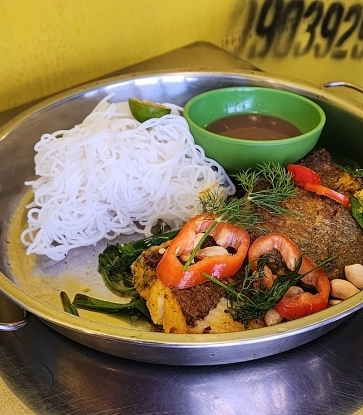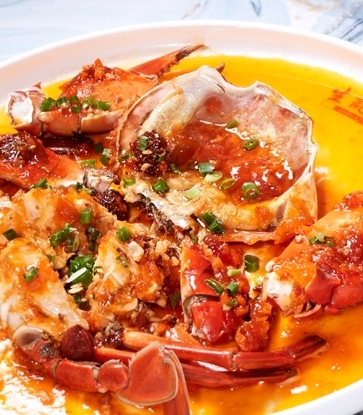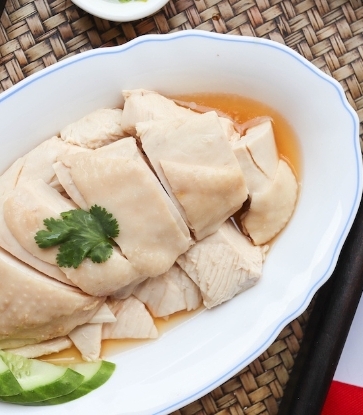Sorrowful Rice is composed of simply roasted pork, fried egg and rice. It can be spotted at your street-corner cha chaan tengs, siu mei shops as well as respected dim sum joints like Lin Heung and Luk Yu. The simple fare has long been served to well-off entrepreneurs, industrious wage earners and everyone in between, who look for something quick and delicious to fill the belly before they move onto their everyday pursuits.
Created By The God Of Cookery
The name Sorrowful Rice was born in 1996 through the smash-hit comedy movie The God Of Cookery. The protagonist, played by Stephen Chow, is gifted a bowl of roasted pork rice with fried egg by his female counterpart played by Karen Mok. He subsequently recreates the dish in a cooking competition and comes up with the evocative name there. The name is a nod to Melancholic Palms, the signature move of martial arts warrior Yang Guo, who had invented it to commemorate his deceased wife in Jin Yong’s action-fantasy novel The Return Of The Condor Heroes.
Chow’s experience in the movie parallels the life of Jin Yong’s tragic hero. The female character played by Mok takes a bullet for Chow. As he reminisces about everything she did for him, his deep lament lends him the inspiration for the winning Sorrowful Rice. As such, Hong Kong’s quintessential grassroots dish finds itself a place in the shrine of local popular culture and a mass of culinary worshippers.

The movie’s popularity propelled restaurants of all ranks to release their versions of Sorrowful Rice or rename the same dish already existing on their menu to attract curious diners. Some hotels even held cooking competitions dedicated to Sorrowful Rice. Unsurprisingly, its reputation spread overseas to the restaurants in mainland China, Taiwan and Singapore that served Hong Kong style cuisine, as they gave eager foreign diners a taste of the legend.
The God Of Cookery made a convincing counter-argument to the attitude that only the likes of extravagant dishes like Buddha Jumps Over The Wall deserved admiration. Dishes like roasted pork rice with fried egg is so embedded in our daily life that their emotional value is far greater than the humble ingredients. Meanwhile, the film depicted the splendid flavours of the rice bowl, but never explained what and how to cook the dish. Therefore, the task to bring Sorrowful Rice to real life very much depends on the interpretation of the chefs at various eateries.

Inspired By A Top Chef
Chef Dai Lung, former executive chef at Conrad Hong Kong, might be the person who holds the answer to what the original Sorrowful Rice is like. He points out that he created Sorrowful Rice for The God Of Cookery. As he often went out of the kitchen to talk to diners, he met and befriended Chow. After hearing Dai’s story and his roasted pork rice with fried egg, Chow decided to make the dish the star of his movie.
Dai disclosed his grocery list and cooking approach for preparing Sorrowful Rice. For roasted pork, he uses specifically the Big Brother Char Siu made by then chef Kwok Kam Man at West Villa Restaurant. It is accompanied by extra-large free-range chicken egg from New Zealand, pan-fried while using a chopstick to pierce all the bubbles on the egg white, so the white is fully cooked as the yolk stays raw. Finally, a mix of new and old Thai jasmine rice is spread thinly in a clay pot to cook. The result is soft rice enhanced by a roasted fragrance.
This holy trinity works so well that the judge of the cooking competition in the movie (played by Nancy Sit) cries after a taste of the rice bowl, to which Chow responds: “I added onion”, despite the absence of onion in Dai’s recipe.
Regardless of how the “authentic” Sorrowful Rice is like, many contemporary remakes put the emphasis on expensive ingredients and grandiose techniques to reach for a much higher price point. In a way, these new entries are the antithesis of the people’s food we have known and enjoyed.





















